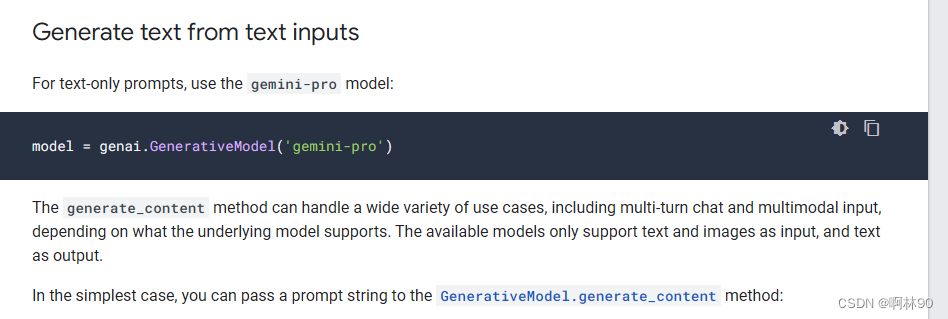Best CRM and project management software represents a powerful synergy, streamlining workflows and enhancing efficiency. This integration allows businesses to manage client relationships and projects seamlessly, fostering better communication, improved collaboration, and ultimately, increased profitability. We’ll explore the key features, benefits, and considerations involved in selecting and implementing such a system.
This exploration will cover crucial aspects such as defining “best” in the context of integrated systems, identifying key features and functionalities, optimizing workflows, ensuring user adoption, understanding cost implications, addressing security concerns, and examining future trends in the field. We will also analyze various popular integrated systems and their unique strengths.
Defining “Best” CRM and Project Management Software

Choosing the “best” CRM and project management software isn’t about finding a single, universally perfect solution. Instead, it’s about identifying the system that most effectively aligns with a specific organization’s needs, processes, and goals. The ideal integrated system seamlessly blends the functionalities of both platforms, improving efficiency and collaboration.The criteria for determining the “best” integrated CRM and project management software revolve around several key factors.
These include ease of use, integration capabilities, scalability, security, reporting and analytics features, and the overall cost-effectiveness of the solution. The best system will be intuitive for users at all levels, easily integrate with existing business tools, adapt to future growth, protect sensitive data, and provide insightful reports to inform strategic decision-making. Ultimately, the “best” solution delivers a significant return on investment (ROI) by streamlining workflows, improving team collaboration, and boosting overall productivity.
Key Features of High-Performing Integrated Systems
A high-performing integrated CRM and project management system boasts several critical features that contribute to its overall effectiveness. Robust task management capabilities, including assigning tasks, setting deadlines, and tracking progress, are paramount. Seamless data synchronization between the CRM and project management modules ensures that all relevant information is readily available to the appropriate team members. Furthermore, effective communication tools, such as integrated messaging and file sharing, facilitate real-time collaboration and reduce reliance on external platforms.
Customizable workflows allow businesses to tailor the system to their specific operational needs, while comprehensive reporting and analytics features provide valuable insights into project performance and overall business health. Finally, a user-friendly interface minimizes the learning curve and maximizes user adoption.
User Profiles and Varying Needs
Different user profiles within an organization will have varying needs and expectations from an integrated CRM and project management system. For instance, a sales representative might primarily utilize the CRM features for managing leads, tracking opportunities, and documenting customer interactions. Their primary focus would be on functionalities that streamline the sales process and improve conversion rates. Conversely, a project manager might focus more on the project management aspects, using the system to assign tasks, monitor progress, manage resources, and track project budgets.
Their needs would center around efficient task management, resource allocation, and comprehensive project tracking. Finally, a senior executive might primarily utilize the reporting and analytics features to gain a high-level overview of project performance, sales trends, and overall business health. Their focus would be on data-driven insights that inform strategic decision-making. A well-designed integrated system caters to these diverse needs, providing a personalized experience for each user while maintaining a cohesive and efficient workflow across the organization.
Key Features of Integrated CRM and Project Management Systems

Integrating CRM and project management functionalities streamlines workflows and improves overall efficiency. By combining these systems, businesses gain a holistic view of their customer interactions and project progress, leading to better resource allocation and enhanced customer satisfaction. This integration fosters a more cohesive and productive environment.
Effective integration hinges on a seamless flow of information between the two systems. This allows for accurate tracking of project progress, timely updates to customer communication, and improved forecasting capabilities. The resulting synergy empowers businesses to optimize resource allocation, enhance collaboration, and ultimately, drive revenue growth.
Core CRM Functionalities Relevant to Project Management
A CRM system, at its core, manages customer interactions. However, features like contact management, opportunity tracking, and reporting become vital for project management. Contact management ensures all relevant stakeholders are readily accessible, facilitating smooth communication and collaboration. Opportunity tracking helps identify and prioritize projects based on their potential value. Detailed reporting provides insights into project performance, customer satisfaction, and resource utilization, enabling data-driven decision-making.
Essential Project Management Features Integrated with CRM Data
Project management systems offer tools for planning, executing, and monitoring projects. When integrated with CRM data, this becomes significantly more powerful. Features such as task assignment, progress tracking, and time management directly benefit from CRM data. For example, assigning tasks based on customer preferences or prioritizing projects based on revenue potential directly leverages CRM information. Real-time progress tracking, linked to customer communication, allows for proactive updates and issue resolution.
Finally, time tracking and reporting, combined with CRM data, allows for a comprehensive understanding of project profitability and resource allocation.
Approaches to Integrating CRM and Project Management Functionalities
Several approaches exist for integrating CRM and project management functionalities. Native integration, where both systems are from the same vendor, often provides the most seamless experience, with data flowing automatically between modules. API-based integration uses application programming interfaces to connect disparate systems, offering flexibility but requiring technical expertise. Finally, third-party integration tools act as a bridge between different platforms, providing a customizable solution but potentially adding complexity.
The optimal approach depends on the specific needs and technical capabilities of the organization.
Comparison of Integrated Systems
| System | CRM Features | Project Management Features | Integration Approach |
|---|---|---|---|
| Salesforce | Contact management, opportunity tracking, sales forecasting, lead management | Task management, Gantt charts, Kanban boards, time tracking | Native integration (Salesforce Sales Cloud & Project Management tools) |
| Microsoft Dynamics 365 | Contact management, account management, sales automation, marketing automation | Project scheduling, resource management, cost tracking, collaboration tools | Native integration (Dynamics 365 Sales & Project Service Automation) |
| Zoho CRM | Contact management, deal tracking, sales analytics, customer support | Task management, project timelines, file sharing, collaboration tools | Native integration (Zoho CRM & Zoho Projects) |
| HubSpot | Contact management, deal tracking, email marketing, customer service | Project planning, task management, team collaboration, reporting | API-based integration or native (depending on chosen tools) |
Workflow and Process Optimization with Integrated Systems

Integrating CRM and project management software creates a powerful synergy, streamlining workflows and significantly boosting efficiency. By connecting client information, project details, and task management, businesses can eliminate data silos and improve communication, leading to faster project completion and higher client satisfaction. This integration fosters a more unified and efficient operational environment.The seamless flow of information between CRM and project management modules minimizes manual data entry, reduces errors, and frees up valuable time for more strategic tasks.
This integrated approach allows for a holistic view of projects, from initial client contact to final delivery, enabling proactive management and informed decision-making.
Streamlined Project Initiation, Task Assignment, and Progress Tracking
A well-designed workflow in an integrated system begins with a lead captured in the CRM. Once the lead converts to a client and a project is initiated, the system automatically creates a corresponding project within the project management module. This automatically populates key client details like contact information and project requirements, eliminating redundant data entry. Task assignment follows a predefined workflow, potentially based on team member skills and availability, also managed within the system.
Progress tracking utilizes automated updates, visual dashboards, and customizable reporting tools to provide a clear overview of project status. For example, a marketing agency using an integrated system might see a new client lead enter the CRM. Upon project initiation, tasks like content creation, design, and social media scheduling are automatically assigned to the relevant team members within the project management module.
Progress on each task is tracked, with automated notifications sent when deadlines approach or milestones are met.
Managing Client Communication and Project Updates
Effective client communication is crucial for project success. Integrated systems centralize all client interactions within the CRM, providing a complete history of communications, including emails, calls, and notes. Project updates are easily shared with clients through the system, using features such as automated progress reports, shared documents, and integrated communication tools. This ensures transparency and keeps clients informed throughout the project lifecycle.
For instance, a software development company using an integrated system could automatically send weekly progress reports to clients, including updates on completed tasks, upcoming milestones, and any potential roadblocks. Client feedback can be directly integrated into the system, ensuring prompt responses and efficient issue resolution.
Reporting and Analytics for Enhanced Project Management Efficiency
Integrated systems provide robust reporting and analytics capabilities, offering valuable insights into project performance and team productivity. These features enable data-driven decision-making, allowing project managers to identify bottlenecks, optimize workflows, and improve overall efficiency. Customizable reports can track key metrics such as project timelines, budget utilization, resource allocation, and client satisfaction. For example, a construction company might use integrated system reporting to analyze project profitability, identify delays, and optimize resource allocation based on historical data.
These analytics can reveal trends and patterns that help predict future performance and improve project planning. The ability to generate real-time reports allows for proactive adjustments and minimizes potential risks.
User Experience and Adoption of Integrated Systems
Successfully integrating CRM and project management software hinges on user adoption. A system, no matter how powerful, is only as effective as the people using it. Challenges exist, but with strategic planning and execution, organizations can maximize user engagement and realize the full potential of integrated systems.The successful integration of CRM and project management tools requires careful consideration of the user experience.
Poorly designed interfaces and a lack of adequate training can lead to low adoption rates, hindering productivity and ultimately negating the benefits of the investment. Conversely, a well-designed system with effective onboarding can significantly improve user satisfaction and boost overall efficiency.
Challenges and Opportunities in User Adoption, Best crm and project management
The transition to a new integrated system often presents challenges. Users may resist change due to familiarity with existing processes, perceive the new system as overly complex, or lack the necessary training to utilize its features effectively. However, opportunities exist to leverage this change. A well-planned implementation, coupled with ongoing support, can lead to increased team collaboration, streamlined workflows, and improved data visibility.
For instance, a company migrating from disparate systems to a unified platform can experience a reduction in data silos, leading to better decision-making and improved project outcomes. The opportunity lies in transforming resistance into enthusiasm through a focus on user needs and effective communication.
Best Practices for User Training and Onboarding
Effective training and onboarding are critical for maximizing system effectiveness. A phased approach, starting with introductory sessions covering basic functionalities and progressing to more advanced features, is often beneficial. Hands-on training, supplemented by readily available online resources such as tutorials and FAQs, helps users learn at their own pace. Furthermore, establishing a dedicated support team to address user queries and provide ongoing assistance is essential for fostering a positive user experience.
Regular feedback sessions can identify areas for improvement in the system or the training materials themselves, ensuring continuous optimization. Consider a tiered approach, offering different levels of training based on user roles and responsibilities, ensuring that each user receives training relevant to their specific needs.
Intuitive Interfaces and User-Friendly Design for Enhanced Productivity
Intuitive interfaces and user-friendly design are paramount for enhancing productivity. A system that is easy to navigate and understand reduces the learning curve and minimizes frustration. Features should be logically organized, and the overall design should be visually appealing and consistent. Clear visual cues, such as icons and color-coding, can significantly improve usability. For example, a project management module with a Kanban board style interface allows users to visualize workflow progress intuitively, enhancing their understanding and control over project tasks.
The incorporation of personalized dashboards, allowing users to customize their view of key information, further contributes to increased efficiency and user satisfaction. Regularly soliciting user feedback on the interface design can help identify areas for improvement and ensure the system remains user-friendly and effective.
Cost Considerations and ROI of Integrated Systems
Choosing an integrated CRM and project management system involves a careful assessment of costs and the potential return on that investment. While the initial outlay might seem significant, the long-term benefits in terms of efficiency and productivity can substantially outweigh the expenses. This section explores the various cost components and demonstrates how to calculate the potential ROI.The total cost of ownership (TCO) for integrated CRM and project management systems varies considerably depending on several factors.
These include the chosen software vendor, the number of users, the required level of customization, and the extent of implementation support needed. Licensing fees are a primary cost, often structured on a per-user, per-month or annual basis. Implementation costs encompass the time and resources dedicated to configuring the system, integrating it with existing tools, and training employees.
Ongoing maintenance includes updates, technical support, and potential system upgrades.
Total Cost of Ownership (TCO) Comparison
A direct comparison of TCO across different integrated systems requires specific vendor pricing and implementation details. However, we can illustrate the cost components with a hypothetical example. Consider two systems: System A, a more expensive, fully featured solution with robust integrations and extensive support, and System B, a less expensive option with fewer features and limited support. System A might have a higher initial licensing cost and a more significant implementation fee, but its robust features and support could reduce long-term maintenance costs and increase user efficiency.
System B, while initially cheaper, might require more internal resources for maintenance and troubleshooting, potentially offsetting the initial cost savings. A detailed cost breakdown for each system, including licensing, implementation, training, and ongoing maintenance, is necessary for a fair comparison. This often requires requesting quotes from potential vendors.
Improving Efficiency and Demonstrating ROI
An integrated CRM and project management system streamlines workflows by eliminating data silos and automating repetitive tasks. For instance, imagine a marketing team using a separate CRM for managing leads and a separate project management tool for tracking campaigns. With an integrated system, lead information automatically updates project tasks, eliminating manual data entry and reducing the risk of errors.
This improved efficiency translates directly into cost savings. A company might see reduced project completion times, leading to faster revenue generation. Reduced administrative overhead, fewer errors, and improved resource allocation all contribute to a positive ROI. Quantifying these improvements requires careful tracking of key performance indicators (KPIs) such as project completion times, error rates, and resource utilization before and after implementing the integrated system.
Calculating and Justifying Cost-Effectiveness
Justifying the adoption of an integrated CRM and project management system requires a comprehensive cost-benefit analysis. This involves calculating the TCO as described above and then comparing it to the projected benefits. These benefits can be quantified in terms of increased efficiency, reduced operational costs, improved revenue generation, and enhanced customer satisfaction. A common approach is to calculate the ROI using the following formula:
ROI = (Net Profit / Cost of Investment) x 100%
Where ‘Net Profit’ represents the difference between the total benefits and the TCO, and ‘Cost of Investment’ is the total cost of acquiring and implementing the system. To illustrate, if an integrated system costs $10,000 and generates $20,000 in cost savings and increased revenue over a year, the ROI would be 100%. This calculation should also consider a time horizon, such as a 3-5 year period, to account for the long-term benefits of the system.
A well-structured cost-benefit analysis, presented with clear evidence of anticipated improvements, strengthens the justification for investment.
Security and Data Management in Integrated Systems
Protecting sensitive data within an integrated CRM and project management system is paramount. A breach can lead to significant financial losses, reputational damage, and legal repercussions. Robust security measures are therefore essential, encompassing both technical safeguards and established organizational policies. This section details crucial aspects of data security and management within such systems.Data security relies on a multi-layered approach.
Strong passwords and multi-factor authentication are fundamental, preventing unauthorized access. Regular security audits and penetration testing identify vulnerabilities before malicious actors can exploit them. Access control mechanisms, such as role-based permissions, ensure that only authorized personnel can access specific data. Data encryption, both in transit and at rest, protects sensitive information even if a breach occurs.
Regular software updates are crucial to patching known security flaws. Furthermore, employee training on security best practices is vital to prevent human error, a major source of security vulnerabilities.
Data Backup, Recovery, and Disaster Preparedness
Effective data backup and recovery strategies are critical for business continuity. Regular backups, ideally to multiple locations (including offsite storage), ensure data can be restored in case of hardware failure, cyberattack, or natural disaster. A comprehensive disaster recovery plan should detail procedures for restoring data and systems, including failover mechanisms to minimize downtime. This plan should be regularly tested and updated to reflect changes in the system and business environment.
For instance, a company might utilize a cloud-based backup solution for offsite storage and implement a mirrored server setup for immediate failover in case of primary server failure. This ensures minimal disruption to operations during unforeseen circumstances.
Data Compliance and Regulatory Adherence
Integrated systems must comply with relevant data privacy regulations, such as GDPR (General Data Protection Regulation) in Europe and CCPA (California Consumer Privacy Act) in California. These regulations dictate how personal data must be collected, stored, processed, and protected. Compliance involves implementing appropriate technical and organizational measures to ensure data security and individual rights. Regular audits are necessary to verify compliance and address any identified deficiencies.
Failure to comply can result in substantial fines and legal action. For example, companies handling sensitive healthcare data must comply with HIPAA (Health Insurance Portability and Accountability Act) regulations, which impose strict requirements on data security and privacy.
Future Trends in Integrated CRM and Project Management

The convergence of CRM and project management systems is accelerating, driven by the need for businesses to streamline operations and enhance client relationships. Emerging technologies are rapidly reshaping this landscape, promising greater efficiency, improved collaboration, and more insightful data analysis. Understanding these trends is crucial for businesses seeking a competitive edge.The integration of Artificial Intelligence (AI), automation, and enhanced mobile accessibility are key drivers of this evolution.
These advancements are not simply incremental improvements; they represent a fundamental shift in how businesses approach project management and client interaction. This section will explore these key technological advancements and their predicted impact on business practices.
AI-Powered Predictive Analytics and Automation
AI is poised to revolutionize integrated CRM and project management systems. Sophisticated algorithms can analyze vast datasets to predict project timelines, identify potential risks, and even automate routine tasks. For example, AI could predict potential delays in a project based on historical data and current team workload, alerting project managers proactively. This predictive capability allows for more accurate resource allocation and proactive risk mitigation.
Furthermore, AI-driven automation can handle repetitive tasks such as data entry, scheduling, and report generation, freeing up human resources to focus on strategic initiatives and client interaction. The integration of AI chatbots into CRM systems can also provide instant customer support and improve response times, enhancing client satisfaction. Companies like Salesforce are already heavily investing in AI-powered features for their CRM platforms, demonstrating the industry’s commitment to this trend.
Enhanced Mobile Accessibility and Collaboration
The increasing reliance on mobile devices necessitates the development of robust mobile-first CRM and project management solutions. This means systems that are not only accessible on mobile devices but are also optimized for the user experience on smaller screens. Seamless access to project information, client data, and communication tools from anywhere, anytime, empowers remote teams and enhances collaboration.
Imagine a construction project manager using a mobile app to update project progress in real-time, instantly sharing updates with the client and team members. The ease of access and real-time collaboration fostered by mobile accessibility will significantly improve project efficiency and client communication.
Hyper-Personalization and Client Relationship Management
AI and data analytics are fueling a trend toward hyper-personalization in CRM. Integrated systems can analyze client data to understand individual needs and preferences, enabling businesses to tailor their communication and service offerings accordingly. This leads to stronger client relationships, increased loyalty, and improved customer lifetime value. For instance, an e-commerce company might use an integrated system to identify a client’s purchase history and recommend relevant products, creating a more personalized shopping experience.
This personalized approach is crucial for maintaining a competitive edge in today’s market.
Blockchain Technology for Enhanced Security and Transparency
Blockchain technology offers potential benefits for securing sensitive data within integrated CRM and project management systems. Its decentralized and immutable nature can improve data integrity and traceability, enhancing trust and transparency across projects and client relationships. While still in its early stages of adoption within this context, blockchain’s potential to enhance security and auditability is significant. For projects involving multiple stakeholders and sensitive information, blockchain could provide a more secure and transparent way to manage data and track progress.
Last Point: Best Crm And Project Management

Ultimately, the choice of the best CRM and project management software hinges on a company’s specific needs and goals. By carefully considering the factors discussed—from core functionalities and workflow optimization to cost-effectiveness and security—businesses can make an informed decision that significantly improves their operational efficiency and client relationships. Embracing an integrated approach empowers businesses to achieve a higher level of productivity and strategic success.
FAQ
What are the common integration challenges with CRM and project management systems?
Common challenges include data inconsistencies, differing user interfaces, difficulties in data migration, and the need for robust training and support to ensure user adoption.
How can I measure the ROI of an integrated CRM and project management system?
Measure ROI by tracking improvements in project completion rates, reduced project costs, increased client satisfaction, enhanced team collaboration, and better resource allocation.
What are some essential security considerations for integrated systems?
Essential security measures include data encryption, access controls, regular security audits, robust backup and recovery procedures, and compliance with relevant data privacy regulations.

